 Leading Blog | Posts by Month |
 Leading Blog | Posts by Month |
10.31.22

LeadershipNow 140: October 2022 Compilation
See more on
Posted by Michael McKinney at 06:23 AM
10.28.22

Ideaflow: Every Problem Is an Idea Problem
CREATIVITY is “the capacity to keep generating ideas after the first one that’s ‘good enough.’” The problem is that most of us stop right there. How do you move past that first good enough idea? The irony of the creative process is that we limit our creativity just when we need it the most. When we’re under pressure, we default to the known and familiar approach even when it clearly won’t suffice. It feels safer to fail by doing the expected thing than risk looking foolish by trying something new. Moving beyond that first good enough idea is the subject of Ideaflow: The Only Business Metric That Matters by Stanford d.school professors Jeremy Utley and Perry Klebahn. Why is creativity important? “Creativity is the craft of problem solving” and as such it should be on the top of everyone’s list. “Every problem is an idea problem.” That’s a productive way of thinking about creativity and everyone’s need for it. “A problem you know how to solve is really just a task, and action that requires a given amount of time and effort to complete. A problem is something you don’t even know how to approach. A true problem responds only to new ideas.” Ideaflow is a measure of creativity. It is the “number of novel ideas a person or group can generate around a given problem in a given amount of time.” It is expressed like this: The value if the measurement lies in seeing how you are learning to activate and enhance your creative potential over time and to identify creative bottlenecks on your team. “The important thing is that you take the same measurement regularly, using the same duration and a similar prompt, ideally the same kind of idea generation you’d benefit from in the normal course of your work” whether it’s an email your putting off responding to or trying to determine a path to profitability. Utley and Klebahn offer techniques to help you improve your ideaflow and teach you the habits and techniques required to generate, test, and implement breakthrough ideas. They divide it into two parts: “Innovate, where we explain the entire pipeline from ideation through experimentation, and Elevate, where we offer our most powerful techniques for improving creative outcomes.” Here they are, with some notes taken from each part of the process. INNOVATE Measure Tomorrow’s Success in Today’s Ideas
Ideas are future profits. No mater how stable your industry of secure your market position, tomorrow eventually becomes today. Without Ideas, you won’t have a tomorrow. Amplify Ideaflow
When a leader puts today’s needs ahead of tomorrow’s inevitabilities, they can blame the economy, technological disruption, and hungry competitors when their shortsightedness catches up with them. Flood Your Problem with Ideas
The secret to coming up with good ideas is coming up with many more ideas. What sets winners apart is volume. Build an Innovation Pipeline
Since perceived effort and risk stymie the capacity to think big, it helps to lower the pressure. We do this by establishing a testing pipeline for ideas. A validation process gives ideas an outlet, someplace to go other than two buckets labeled Yes and No. Put Your Ideas to the Test
Design experiments not to confirm your existing beliefs but to challenge them. Make the World Your Lab
As you adopt an experimental mindset and begin to see the benefits of real-world testing, you will become more comfortable with taking small risks now that forestall bigger ones down the road. ELEVATE Mine for Perspectives
Divergent thinking is crucial to explore the full space of possibilities before converging on the most promising direction. Volume and variety of input are both critical to healthy ideaflow. Nothing elevates creativity like the serendipitous meeting of different minds. Shake Up Your Perspective
Reverse your assumptions. Conducting an Assumption Reversal is about identifying what you’re taking for granted about a situation and deliberately assuming its opposite is true. Stoke Curiosity
When the answers run dry, ask a better question. Even if you start with a provocative question, there’s only so much you can do by looking at a problem from one angle. When ideaflow ebbs, move your frame. Don’t wait for things to fizzle out before thinking about other questions. Instead, generate lots of frames systematically at the start. Encourage Creative Collisions
According to neurobiologist Morten Friis-Olivarius, the “brain is incapable of producing new material from scratch.” Untangle Creative Knots
Logjams are not only inevitable but crucial parts of the creative process. 
Posted by Michael McKinney at 07:41 AM
10.27.22

Leading Thoughts for October 27, 2022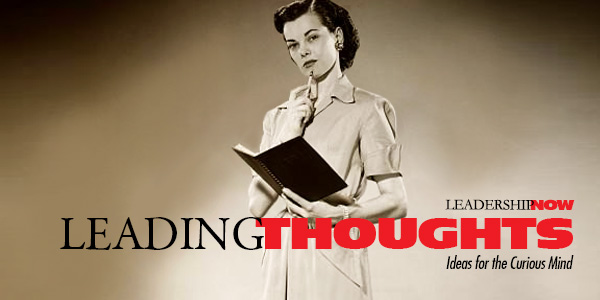
IDEAS shared have the power to expand perspectives, change thinking, and move lives. Here are two ideas for the curious mind to engage with: Conductor Benjamin Zander and family therapist Rosamund Zander on the power of perspective: “Every problem, every dilemma, every dead end we find ourselves facing in life, only appears unsolvable inside a particular frame or point of view. Enlarge the box, or create another frame around the data, and problems vanish, while new opportunities appear.” Source: The Art of Possibility : Transforming Professional and Personal Life
Founder of Catalyst for Peace, Libby Hoffman on listening with: “Not a passive or one-way listening, that way of asking for and receiving someone else’s one-directional offering. There is a special kind of listening that can only happen over time, and I have come to think of it as one of the great untapped social change resources available to us, if we cultivate the commitment and the sensibilities to utilize it. It is both a listening to and a listening with another. Listening with implies a common standpoint and/or a common vision or purpose calling you forward. With ongoing presence and engagement, this kind of listening can be generative and creative—co-creative.” Source: Answers Are There: Building Peace from the Inside Out Look for these ideas every Thursday on the Leading Blog. Find more ideas on the LeadingThoughts index.
Posted by Michael McKinney at 07:09 AM
10.24.22

Becoming FDR: The Personal Crisis That Made a President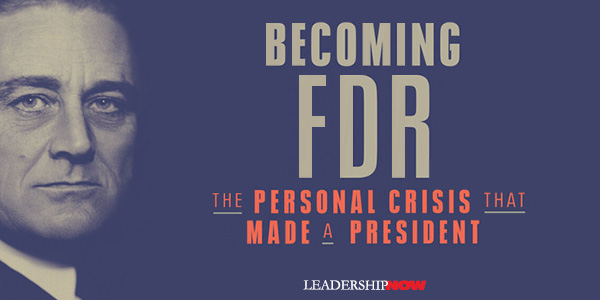
WHEN FEAR and suffering are all around us, how does a true leader inspire hope? asks author and journalist Jonathan Darman. He found the answer not in his presidency but in the years leading up to it. In an insightful book, Becoming FDR: The Personal Crisis That Made a President, Darman pulls back the curtain of Franklin’s personal tragedy to reveal the character and the change in perspective that he developed as he faced his diagnosis. In popular memory, Franklin Roosevelt is the quintessential political natural, a president with greatness in his blood. He was indeed born with many advantages—wealth, charm, and intelligence; loving attentive parents; and a famous cousin who was president of the United States. Had he never gotten polio, those things could have delivered him a life of achievement and accomplishment. Aligned with luck and timing, they might have even brought him to the White House someday.
It was sad that “His speeches were pleasant to listen to, but when he was done speaking, it was hard to remember anything he’d had to say.” Franklin was on track to follow in his cousin Theodore Roosevelt’s footsteps all the way to the White House. But on Wednesday, August 10, 1921, Franklin’s life changed forever. At the age of thirty-nine, he was diagnosed with Polio. He could have just quietly faded away, but he chose to believe in the possibility of a full recovery. Franklin used “his powers of feeling, perception, and intuition to create a foundation of hope.” In the early days of a serious illness or injury, the mind is destabilized.…Hope is the scaffolding that protects the traumatized mind….Pain becomes more bearable when it has a horizon. Suffering is more survivable when it has the promise or even the possibility of an end. And recovery seems more possible when it is spelled out in a detailed plan. His former lifestyle had prevented him from deep thinking. “Convalescence meant he could no longer search for distraction at the first hint of a difficult or uncomfortable idea.” A political aid that lived with the Roosevelts, Louis Howe, remarked Franklin “began to see the other fellow’s point of view. He thought of others who were ill and affected and in want. He dwelt on things which had not bothered him much before. Lying there, he grew bigger by the day.” In 1924, Franklin learned of a man that had regained his ability to walk after three years of therapy in the warm springs near the town of Bullochville, Georgia. Franklin believed. “The more time he spent there, the more he was awakened to what other people who had polio—most of whom were less fortunate and connected than he—had gone through.” Warm Springs did not bring his legs back to life, but they did awaken in him an “awareness of other people’s pain, and awareness of his own ability to ease it.” Gather the best available wisdom. Focus on practical action. Strengthen community. Nurture hope. These had been the cornerstones of his own attempts at recovery, and Franklin replicated then at Warm Springs. Later, when faced with the challenge of lifting his country out of an economic crisis that had spread dire terror and hopelessness throughout the land, these same principles would form the backbone of his response. His years of convalescence would shape his response to the nation’s crisis when he took office as the president in 1933. “Need and adversity, he now understood, not only caused suffering; they also robbed people of the dignity and purpose that comes from feeling useful.” His support of the Civilian Conservation Corps and the Works Program Administration was to that end—restoring dignity and purpose. “At the heart of Franklin’s relationship with the American people was his unique ability to envision their fears, hopes, and needs.” Years before, his Uncle Fred wrote to him—never worry, accept things as they are, look forward and not back—became his message too. In his inaugural speech, he told Americans, “the only thing we have to fear is fear itself”—they believed because they knew he deeply believed it. Although he kept much of the details of his illness private, they knew when he spoke of the struggle against fear that it was his fight too. 
Posted by Michael McKinney at 06:47 AM
10.21.22

Leading with Humility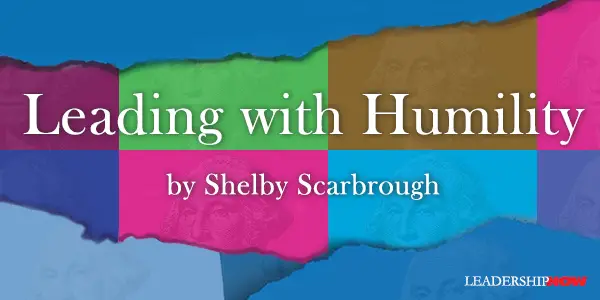
STUDIES have shown that humility is one of the most important characteristics of successful leaders. A leadership expert wrote in Forbes magazine that “humble leaders listen more effectively, inspire great teamwork, and focus everyone (including themselves) on organizational goals.” The leader’s strongest tool is humility. It intensifies credibility. When I left the White House to work at the State Department protocol office, I was honored to bid farewell to President Reagan in the Oval Office in a “one on one.” (There’s actually a video of it floating around the internet—a little embarrassing since I fawned over him, but I meant every word I said and will remember the experience forever.) At the end of that special meeting, he presented me with a replica of the plaque displayed on his desk: There is no limit to what a man can do or where he can go, as long as he does not care who gets the credit. I took those words to heart, although sometimes it can be hard to live up to such an ideal. I often reflect on Reagan’s example of humility and generosity of spirit. He was an extraordinary human being and larger than life—a former movie star, governor of California, and ultimately leader of the free world—but he treated everyone with respect and courtesy and made everyone feel valued. He was not falsely modest—Reagan was aware of his exceptional gifts, his purpose, and his significant role in history—but he was, deep to his core, a gracious and humble man. One of the most approachable leaders I had the pleasure of working with was Nelson Mandela. My friend Bill Sittmann (may he rest in peace) was the executive secretariat at the National Security Council in the George H. W. Bush White House. Nelson Mandela had been recently released from his long prison term in South Africa. I had just started my business, Practical Protocol, so Bill referred me to the group organizing Mr. Mandela’s visit to the United States. They hired me to organize the visits to the White House, the State Department, and Capitol Hill. It was a tremendous honor and incredible opportunity to spend just a little time with the Nelson Mandela. Was he as advertised? Absolutely. Charming, kind, soft-spoken, and very approachable—in a word, humble. Even then I could feel how lucky I was to have the chance to work for and to serve such amazing individuals. I was deeply humbled in the process. Think of other great leaders: Martin Luther King Jr., Gandhi, Mother Teresa, Abraham Lincoln. None of them believed they were more important than their messages, nor more valuable than those who followed them. They engaged, empowered, and inspired others because they were humble. They lived to be in service to others. They did not seek credit or admiration for their work, but neither were they weak or passive. Their humility supported a boundless strength of character that created the environment for so many people to trust in them, believe in their causes, and help them achieve their goals. We might think that humility is the opposite of hubris (excessive pride or self- confidence; arrogance that ultimately leads to a downfall). However, we can think of humility as the ballast or center of a seesaw. Humility balances out the extreme characteristics of hubris and lack of self-worth. We are at our best selves when we understand that we are “not nothing” but rather that we are “not everything”! We are just one part of a larger part of the infinite. People with hubris arrogantly believe that their way is the only way and that they are the only ones who know how to accomplish something. Shakespeare’s Macbeth is a classic literary example of hubris and its consequences. Today, we might point to the despicable Jeffrey Epstein as the ultimate symbol of hubris. He and those he collaborated with thought themselves untouchable. We see what became of him. As of this writing, we have not yet witnessed the inevitable downfall of all those associated with him. There will be a price to pay for hubris—there always is. Humility doesn’t require us to abandon our self-confidence; Lincoln was not insecure, and he knew he was up to the task. But he respected and appreciated the strengths of others, and always sought the counsel of his cabinet before making a significant decision. A recent study found that gratitude and humility are self-reinforcing. If we are truly grateful, we receive an understanding of our place in the mix of all humanity. Offering our best qualities to the world while honoring those of others can humble us and help dissipate the destructive energies that are taking up so much space in the world. Humility doesn’t care about winning points, keeping score, or seeking approval from any outside source. The same can be said of the civil life in general: civility isn’t about getting credit for doing the right thing. To me, it’s about developing character and integrity that resolutely reside within us and then listening to that inner voice, our conscience. If we do this, with none the wiser, we succeed in exhibiting what I now consider the core component of civility: humility.  
Posted by Michael McKinney at 10:07 AM
10.20.22

Leading Thoughts for October 20, 2022
IDEAS shared have the power to expand perspectives, change thinking, and move lives. Here are two ideas for the curious mind to engage with: Computer programmer Ward Cunningham on the learning experience of decision-making: “I can't tell you how much time is spent worrying about decisions that don't matter. To just be able to make a decision and see what happens is tremendously empowering, but that means you have to set up the situation such that when something does go wrong, you can fix it. When something does go wrong, it doesn't cost you or your customer an exorbitant amount. It isn't ridiculously expensive. When you get in situations where you cannot afford to make a mistake, it's very hard to do the right thing. So if you're trying to do the right thing, the right thing might be to eliminate the cost of making a mistake rather than try to guess what's right.” Source: Interview, Collective Ownership of Code and Text
James MacGregor Burns on the changing context of leadership: “American leadership went into decline after the revolution. The leaders were generally the same men, many far-famed and even venerated, but they were projected now into a different situation. They had been united behind transcending goals. Now they were divided over mundane policies. They had offered a striking example of bold, collective—even transforming—leadership. Now they were expected to practice piecemeal, transactional leadership.” Source: Fire and Light: How the Enlightenment Transformed Our World Look for these ideas every Thursday on the Leading Blog. Find more ideas on the LeadingThoughts index.
Posted by Michael McKinney at 07:33 AM
10.13.22

Leading Thoughts for October 13, 2022
IDEAS shared have the power to expand perspectives, change thinking, and move lives. Here are two ideas for the curious mind to engage with: Consultants Kevin and Jackie Freiberg on finding the right fit when hiring: “Consultants Kevin and Jackie Freiberg on finding the right fit when hiring: Have you defined what it takes to be a great employee in your company? Identify people who already work for you who fit the description. Then ask their customers, employees, peers, and managers what makes them so effective and easy to do business with. Source: Guts: Companies that Blow the Doors Off Business-As-Usual
Mike Myatt on the leadership gap: “When leadership is perceived as little more than a title granting access to a platform for personal gain, rather than a privilege resulting in an opportunity to serve, we’ll continue to find ourselves in a crisis of leadership.” Look for these ideas every Thursday on the Leading Blog. Find more ideas on the LeadingThoughts index.
Posted by Michael McKinney at 12:34 PM
10.07.22

John Foster Dulles Fires George Keenan
The legendary James “Scotty” Reston—a two-time Pulitzer Prize winner and executive editor of The New York Times—recounts a story in his autobiography Deadline about the secretary of state John Foster Dulles’ handling of George Keenan. Dulles had a “remarkable talent for getting rid of many of the most qualified men in the State Department when he thought they disagreed with him or embarrassed him politically.” Keenan was part of a group of foreign policy elders Walter Isaacson and Evan Thomas, later referred to as “The Wise Men.” When Dulles became secretary of state in the Eisenhower administration, he saw no need to share responsibilities and promptly got rid of George Keenan, who Reston reports was the most knowledgeable Soviet expert in the country. Reston shares how that incident went down:
Posted by Michael McKinney at 05:14 PM

How to Get Along with Difficult People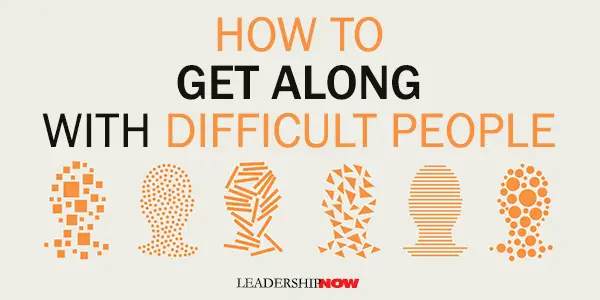
LEADERSHIP is all about relationships—even difficult ones. It would be great if we got along with everyone, but not everyone we encounter makes that easy. At one time or another, we all run into difficult people. Sometimes they are just difficult, and sometimes we make them that way. Amy Gallo shares insights and approaches for dealing with the difficult people in your life in Getting Along: How to Work with Anyone (Even Difficult People). In this excellent reseource, she offers research-based advice to help us not just to navigate the situations made difficult by people in our lives but to transform them into positive, constructive relationships. All relationships can change over time, even the good ones. And most can be transformed for the better if we are willing to put in the time and effort. The general lack of empathy we see today only complicates this situation. It is important to reframe the difficult situation to see it from the other person’s point of view. In this key insight, Gallo says when faced with a difficult person, “You must create the necessary space to choose a response that will result in growth instead of conflict.” Gallo covers in detail eight types of difficult people we might encounter. And some people display more than one. She provides helpful dos and don’ts for dealing with each type.
She offers nine principles for getting along with anyone, and for me, this is the essential section of the book. Principle 1: Focus on what you can control People change if they want to change, so focus on what you could do differently. Gallo writes, “I’ve been in many situations where I thought, If I can just explain this to the other person, surely, they’ll understand. We’ve all fantasized about saying or doing the perfect thing that forces a rival to see the light, to realize the error of their ways and vow to completely reform.” It is a fantasy. She adds a thought from Adam Grant, “All I can do is try to understand their thinking and ask if they’re open to some rethinking. The rest is up to them.” If your strategy for getting along with another person depends on them changing, good luck with that. Principle 2: Your perspective is just one perspective It is not realistic to expect that you will see eye-to-eye on everything with others. “Naïve realism is the tendency to believe that we’re seeing the world around us objectively, and if someone doesn’t see it the same way, they’re uninformed, irrational, or biased.” Then there is the fundamental attribution error that assumes a person’s behavior is a result of their personality rather than the situation they find themselves in. As a result, we tend to make assumptions about others that are not true, and reaching an agreement on the “facts” is highly unlikely. My view is just that—my view. Gallo recommends, “Instead of rehashing the past—a tactic that usually leads to nothing but hard feelings and deadlock—try to focus on what should happen going forward.” Principle 3: Be aware of your biases Our interactions are shaped by our biases. “Even our definition of ‘difficult’ behavior can be shaped by the prejudices that we carry into the workplace.” Know your biases, so you can monitor them more closely. Principle 4: Don’t make it “me against them” “If it is ‘me against you,’ the situation becomes polarizing. There’s someone who’s being difficult and someone who isn’t, someone who is right and someone who is wrong.” To move past this thinking, “Imagine that there are three entities in the situation: you, your colleague, and the dynamic between you.” In this way, you can separate the people from the problem. Principle 5: Rely on empathy to see things differently “We often perceive slights to be worse than they intended to be.” We make ourselves the victim. We all “make erroneous attributions about each other’s intent to do harm, how much harm was caused, how severe the issue is, how guilty the other person feels, etc.” This is not only unfair, “But it nudges you toward wallowing, revenge, or other unproductive responses rather than getting along.” Give the other person the benefit of the doubt. See the situation from the other person’s perspective. Principle 6: Know your goal When addressing a difficult situation, know what you want. “Identifying your goal will help you avoid getting pulled into any drama and stay focused on constructive tactics.” While you may say your goal is to get along, your hidden agenda—payback for example—will “color your interactions, causing you to use language or a tone that is excessively critical or condescending, compromising your ability to achieve your stated goal.” Principle 7: Avoid gossip, mostly Notwithstanding studies that indicate, on a positive note, that gossip may keep people from behaving selfishly or badly because they don’t want others talking badly about them, I believe gossip should be avoided at all costs. Gossip divides, diminishes others’ ability to change, infects others with your biases and interpretations, and can destroy your ability to heal a relationship. Gossip is not a good basis for building and maintaining relationships. Principle 8: Experiment to find what works There isn’t one right answer. Improving a relationship will “feel far more manageable if you start coming up with two or three ideas you want to test out. Often, small actions can have a big impact.” “Keep refreshing the approaches you try and be willing to abandon ones that aren’t producing results. Principle 9: Be—and stay—curious In any relationship problem, “it’s easy to tell yourself, ‘This is the way it’s always going to be’ or ‘Why should l expect them to change?’ or ‘We just don’t get along.’ I won’t tell you that it is going to be fun or even pleasant to do what you need to do to salvage a troubled relationship, but complacency and pessimism will get you nowhere. Instead, adopt a curious mindset.” Gallo advises, “Assume you have something to learn and believe that the negative dynamic can turn around.” Approach difficult relationships with a growth mindset. 
Posted by Michael McKinney at 06:00 AM
10.06.22

Leading Thoughts for October 6, 2022
IDEAS shared have the power to expand perspectives, change thinking, and move lives. Here are two ideas for the curious mind to engage with: Ronald Heifetz and Marty Linsk on why leadership is dangerous: “Each day brings you opportunities to raise important questions, speak to higher values, and surface unresolved conflicts. Every day you have the chance to make a difference in the lives of people around you. Source: Leadership on the Line: Staying Alive through the Dangers of Leading
Anthropologist Grant McCrackenon the need to move things outside of the gravitational field of the corporation: “If you ideate in the same space as you work in, you are going to come up with the same solutions.” Look for these ideas every Thursday on the Leading Blog. Find more ideas on the LeadingThoughts index.
Posted by Michael McKinney at 07:45 AM
10.03.22

10 Books to Get You Back to Work – Fall 2022
SUMMER is over. It’s time to take stock of where you are and prepare now to improve your leadership. Books have the power to break the inertia in our lives—help us to shift gears—to see in a new way. These titles can help us to recalibrate the structures in our lives to defeat inertia and raise our standards. Here are ten books to help you get back to work ... better.
Posted by Michael McKinney at 06:44 AM
10.01.22

First Look: Leadership Books for October 2022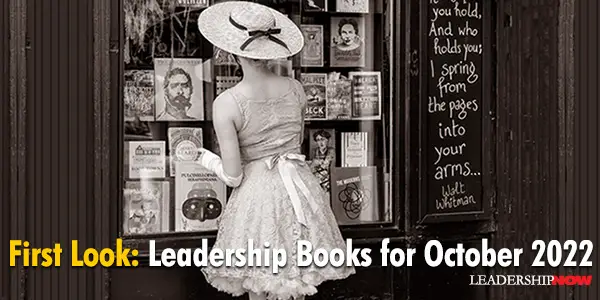
HERE'S A LOOK at some of the best leadership books to be released in October 2022 curated just for you. Be sure to check out the other great titles being offered this month.
Business leaders, with millions of dollars down the drain, struggle to abandon a new app or product that just isn’t working. Governments, caught in a hopeless conflict, believe that the next tactic will finally be the one that wins the war. And in our own lives, we persist in relationships or careers that no longer serve us. Why? According to Annie Duke, in the face of tough decisions, we’re terrible quitters. And that is significantly holding us back. In Quit, Duke teaches you how to get good at quitting. Drawing on stories from elite athletes like Mount Everest climbers, founders of leading companies like Stewart Butterfield, the CEO of Slack, and top entertainers like Dave Chappelle, Duke explains why quitting is integral to success, as well as strategies for determining when to hold em, and when to fold em, that will save you time, energy, and money.
It’s tempting to be seduced by futurist fantasies where every company has the culture of a startup, and where employees in wacky, whimsical office settings, liberated from hierarchies and bosses that oppress them, are the foundation for breakthrough performance. “Get real,” warn Nicolai J. Foss and Peter G. Klein. These fads ironically lead to micromanaging and, often, to disaster. Companies and societies, they show, need authority and hierarchy to coordinate work, including creative work. And, counterintuitively, they illustrate how the creative use of authority and hierarchy helps companies to be more agile and flexible, enabling educated, motivated people and teams to thrive. And not a moment too soon: they provide evidence that global challenges such as the proliferation of artificial intelligence, economic disruption, empowered knowledge workers, and black swan events such as the pandemic actually make hierarchy and the job of the manager more important than ever.
Agile decision making is imperative as you lead in a data-driven world. Amid streams of data and countless meetings, we make hasty decisions, slow decisions, and often no decisions. Uniquely bridging theory and practice, Decisions Over Decimals breaks this pattern by uniting data intelligence with human judgment to get to action – a sharp approach the authors refer to as Quantitative Intuition (QI). QI raises the power of thinking beyond big data without neglecting it and chasing the perfect decision while appreciating that such a thing can never really exist. Successful decision-makers square critical thinking with open-mindedness by blending information, intuition, and experience.
Yes, women faced massive social and institutional headwinds, and struggled with double standards and what psychologists call “pattern matching.” Yet those who thrived, Boorstin found, shared key commonalities that made them uniquely equipped to lead, grow businesses, and navigate crises. They were highly adaptive to change, deeply empathetic in their management style, and much more likely to integrate diverse points of view into their business strategies, filling voids that their male counterparts had overlooked for generations. By utilizing those strengths, they had invented new business models, disrupted industries, and made massive profits along the way. Featuring new interviews with Katrina Lake, Gwyneth Paltrow, Jenn Hyman, Whitney Wolfe Herd, Lena Waithe, Shivani Siroya, Julia Collins, and more, When Women Lead is a radical blueprint for the future of business, and our world at large.
In this leadership book, renowned industry analyst Josh Bersin introduces a new way to think about organizational design, employee engagement, and employee development. Distilled from decades of research and management theory into seven practical yet profound management principles, Bersin outlines how business leaders can create enduring companies that thrive with improved customer satisfaction, employee retention, and business agility. Leaders of irresistible companies understand that by unleashing the power of the human spirit, their companies can go faster and farther than their competitors by empowering people and creating employee-centric cultures. If you can make your company—large or small—irresistible, your employees will contribute, innovate, and grow more than you thought possible.
We all want great ideas, but few actually understand how they’re born. Innovation doesn’t come from a sprint or a hackathon--it’s a result of maximizing ideaflow. Jeremy Utley and Perry Klebahn of Stanford’s renowned Hasso Plattner Institute of Design (aka the “d.school”) offer a proven strategy for coming up with great ideas by yourself or with your team, and quickly determining which are worthy. Perhaps you have experienced low ideaflow. Have you been in that quiet conference room, with a half-filled whiteboard, and an unmet business target?. With the proven system in this book, entrepreneurs, managers, and leaders will learn how to tap into surprising and valuable ideas on demand and fill the creative pipeline with breakthrough ideas.
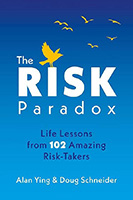  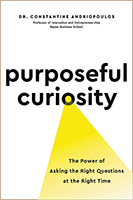 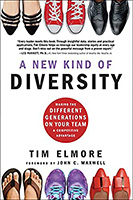
“A library is not a luxury but one of the necessities of life.” — Henry Ward Beecher
Posted by Michael McKinney at 05:56 AM
|
BUILD YOUR KNOWLEDGE


How to Do Your Start-Up Right STRAIGHT TALK FOR START-UPS 
Grow Your Leadership Skills NEW AND UPCOMING LEADERSHIP BOOKS 
Leadership Minute BITE-SIZE CONCEPTS YOU CAN CHEW ON 
Classic Leadership Books BOOKS TO READ BEFORE YOU LEAD |
|